 Examples of Real Women & Garments
Examples of Real Women & Garments
 RECOMMENDED FOR THIS CHARACTER
RECOMMENDED FOR THIS CHARACTER
TO BE INCLUDED IN ENSEMBLE:
MAIN GARMENTS
- 2-piece dyed cotton day dress of basic design, fitted at the bodice
- Gathered (not gored) skirt with front flat & fullness to the back; preferably skirt & bodice of same fabric
- Practical pearl buttons with perhaps some hand-made piping out of leftover fabric (“just for fun”)
- Over drape of somewhat minimal flounce & volume, to be in style, but still not excessive
- She would have 1-2 different drapes and/or bodices to make the ensemble dress up or down; but that’s all
- No blouse would be worn
ACCESSORIES (By customer, can quote hats separately)
- Hair well pinned in back; never ever caught down or much out of place
- Bonnet – a simple straw hat with cotton, wool, or velvet lining 1 for summer and her old Granny’s black bonnet with black ribbon. She would wear a white or black prayer cap on the top of her head (small version of the old mobcaps) in private of lace and/or crochet
- Family heirloom brooch always with her
- Practical 2nd hand button up boots with a pair of worn leather pumps for dress up
- Heavy cotton hand-knit stockings with garters at the knee
- Several hand-crocheted or knitted shawls for the seasons, given to her by the ladies of the church or made herself
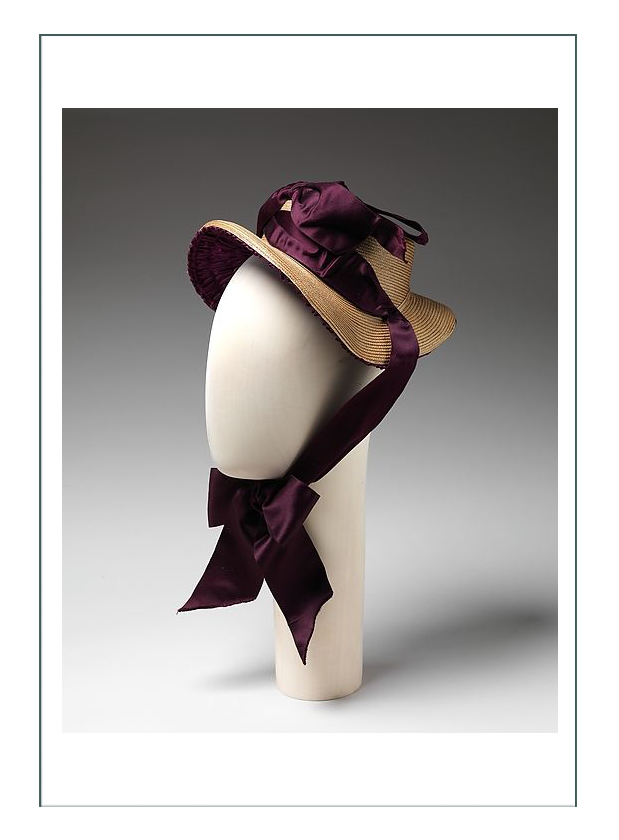
Mary Jo’s summer hat would be homemade & remade each year with odds and ends available as was this 1882 straw bonnet 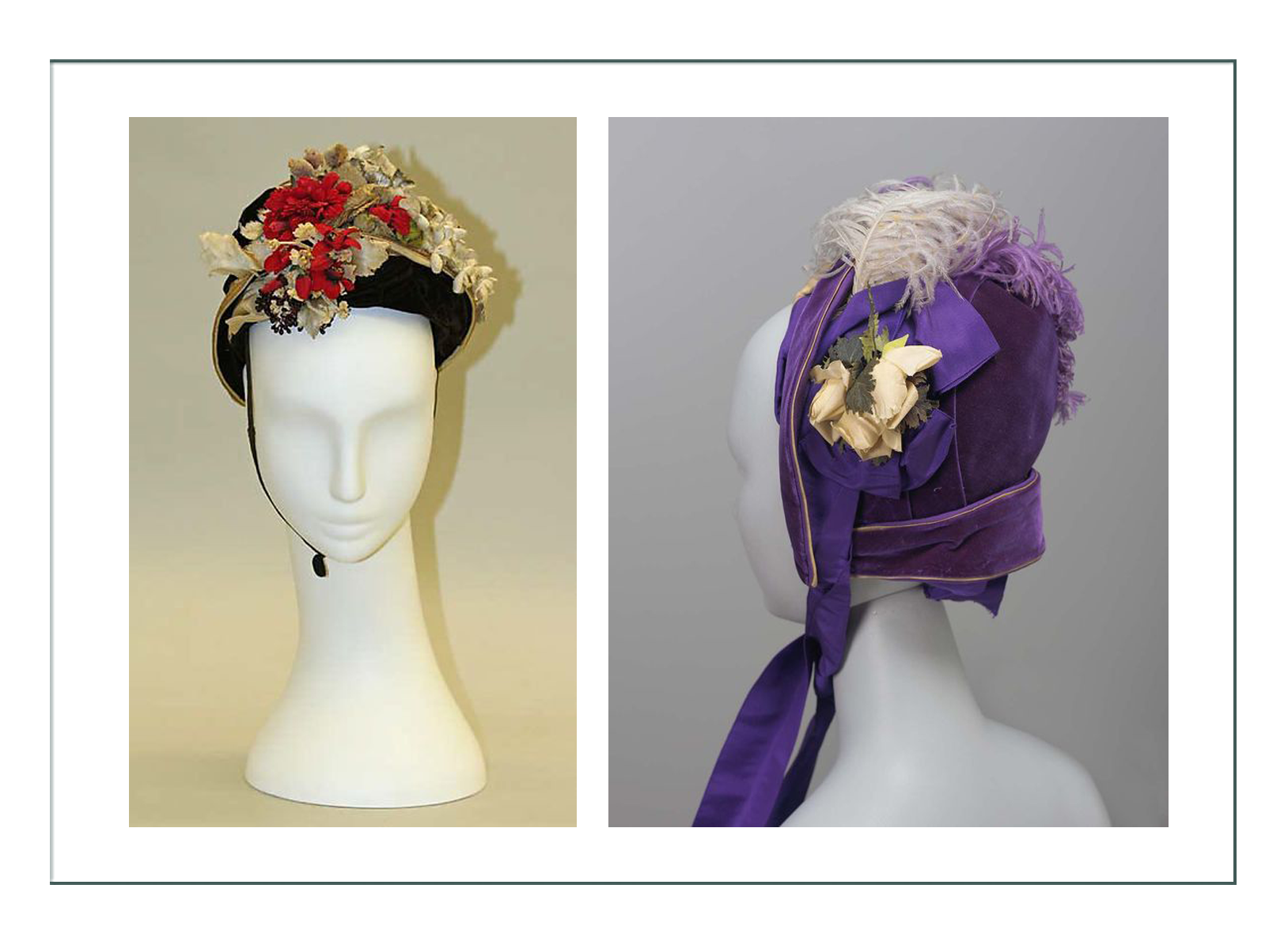
Comparing the 1883-84 hats worn by our “Alex” character to these 1881 models, you can see the earlier versions were more colorful, and covered the back of the neck as well. This older, more practical style would be worn by Mary in winter, perhaps homemade or brought with her from her youth & modified to be fashionable
UNDERGARMENTS
- Ideally one wool petticoat worn year round (for “health”), but realistically plain white muslin with pleats & 2-6 rows of self fabric ruffles to keep skirt away from the legs. These would be ‘roughly’ sewn by hand or use scraps of leftover lace at the bottom, and plain white for the upper layers of ruffles
- She might add that second wool petticoat in winter
- Petticoats to be cord tied at the top, with fullness pulled to the back (no button or waist)
- Combination of chemise with split pantaloons, simply adorned with faggots and a little silk ribbon (no embroidery or cut lace), but with lovely ruffles at the knee, shoulders, & neckline. Her pantaloons would be closer to ankle length as was fashionable 5 years earlier
- No corset cover would be worn, although for winter she might add one in wool
- Her corset would be the shorter, 1875 type that had been worked over to let it out, rebone, or change it through the years. It might be of plain wool, cotton, or linen fabric with a nice durable lining, but she might have splurged when she first bought it and have it of a plain silk brocade or couteil for durability over time
- It would be simply or half-boned; used more for modesty & warmth than shaping
- No understructures would be used, although she might have a small bustle or bustle pad when she dressed upto hold out the drape, since her drape would be made of minimal fabric, and because she would be of the mindset of fashion that was now out of style (bustles were popular before and then again after 1883)
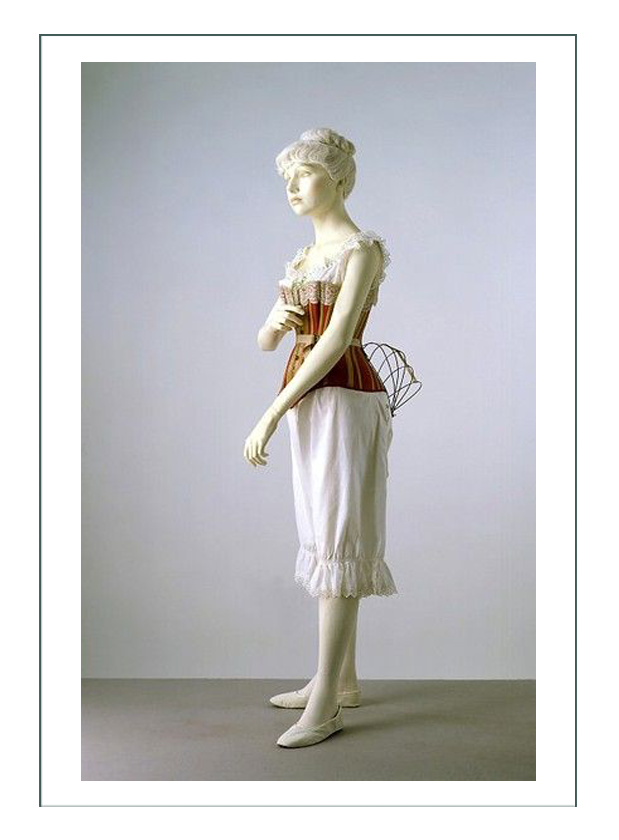
The small bustle or a bustle pad might be worn when Mary Jo dresses up, because this is a 5-10 year old out of date style by the time of our depiction. The combination chemise/pantaloon would be her favorite because it was current and very sensible. She would have some lace & ruffle, because she wouldn’t be concerned about a flat, smooth front line, and with her gathered skirt, the ruffles would make no lumps as they would in skirts of the next decade 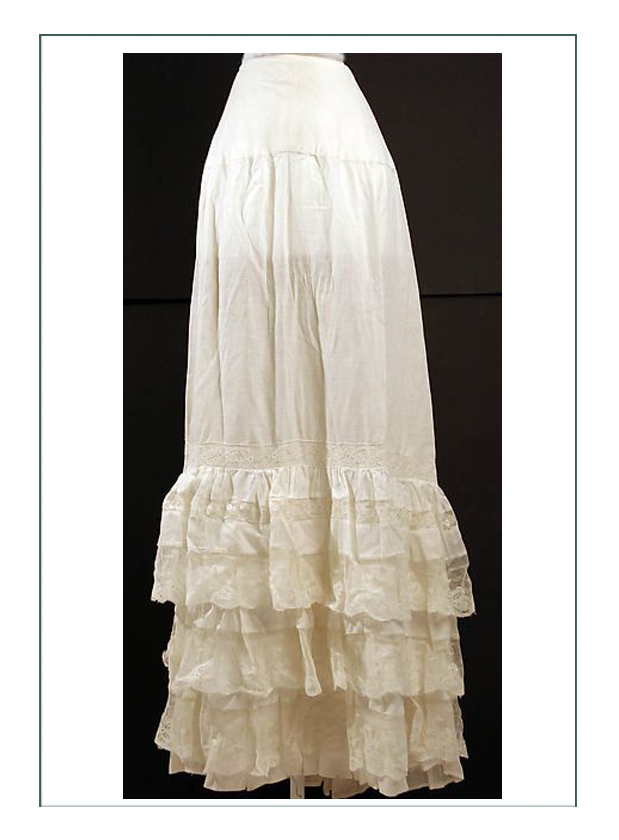
While sparing fabric, she would need the lower ruffles to bring her skirt away from her legs so she could walk, and also to provide insulation, warmth, or cool. The top of our character would most likely be gathered without the drop waist as shown in this 1884 version 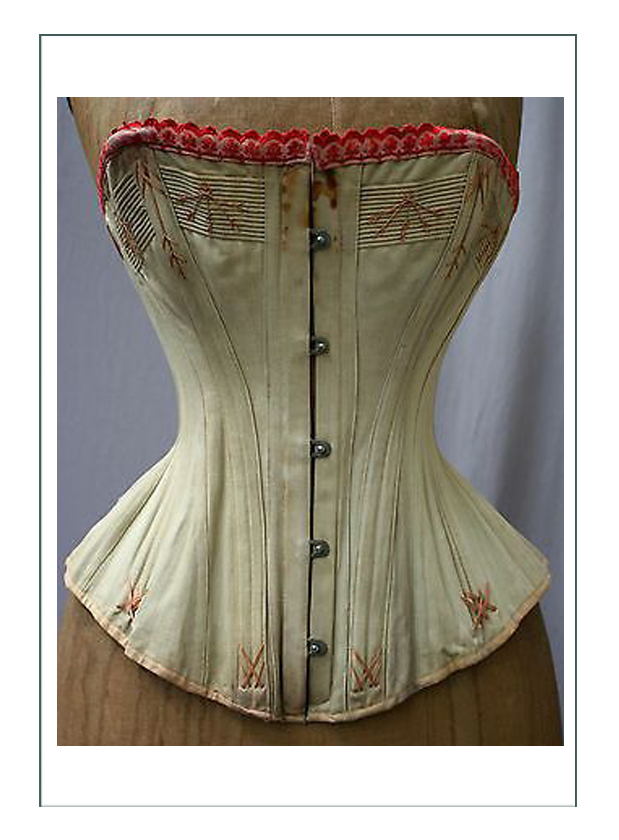
This is an 1880 corset with a flat busk. It is very basic, with minimal boning and support for the breasts. While Mary Jo might wear the shorter version, this plain white with some lace & embroidery to protect the boning seems exactly in character
 Ideas for This Character
Ideas for This Character
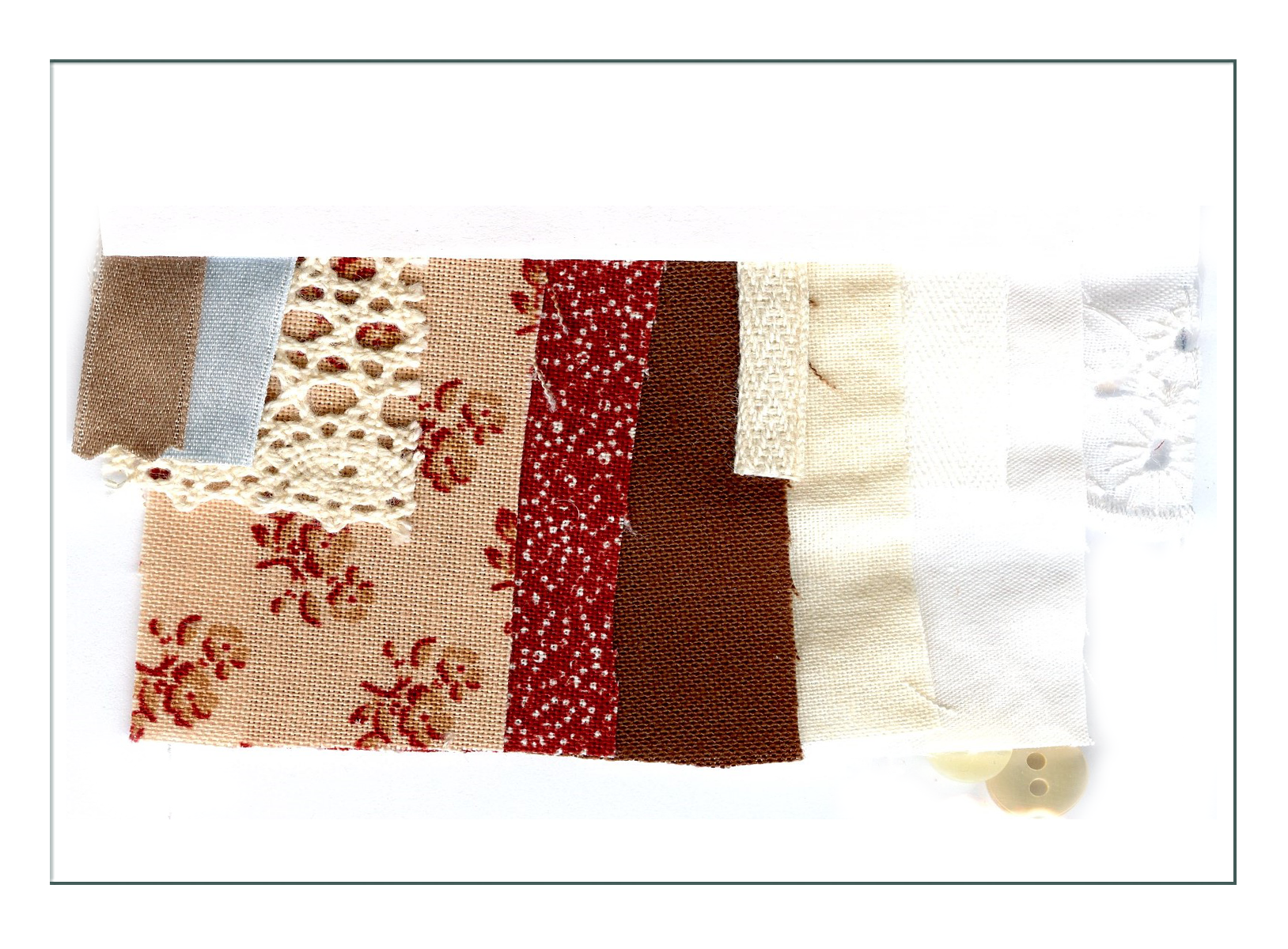
These are the fabric & notion selections as shown in the sketch. They include 100% cotton or silk options in trims, lace, ribbons, ruffles, in dye methods, colors, & patterns appropriate to 1883. We have these and many others in stock ready to go, & can find whatever you want from our excellent historic sources as well
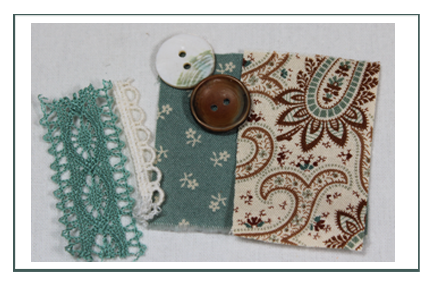
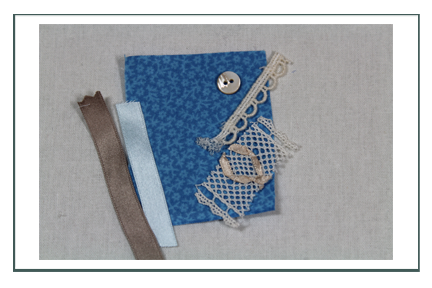
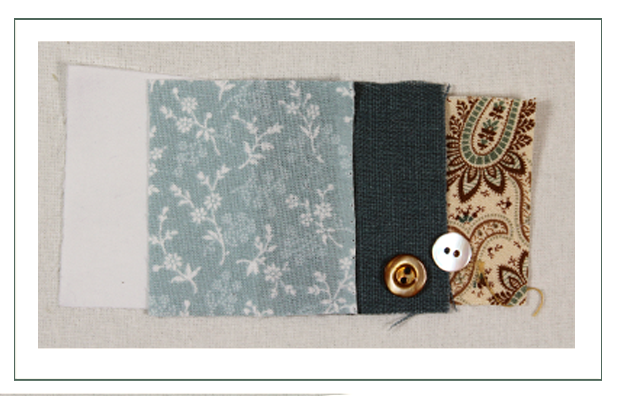
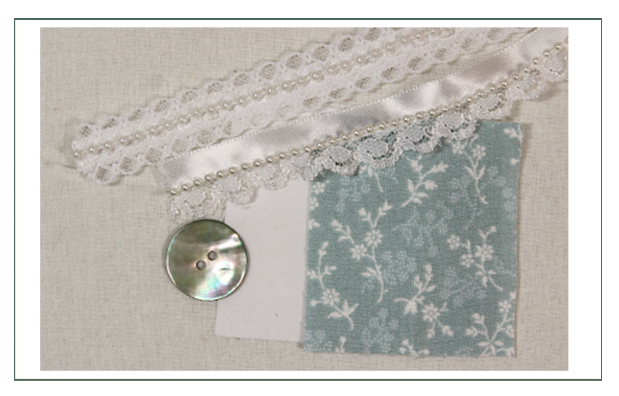
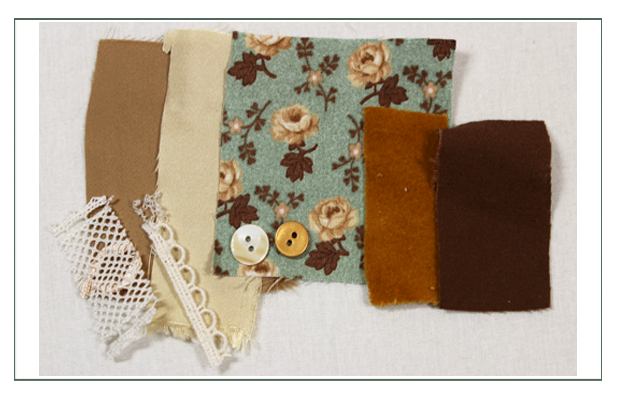
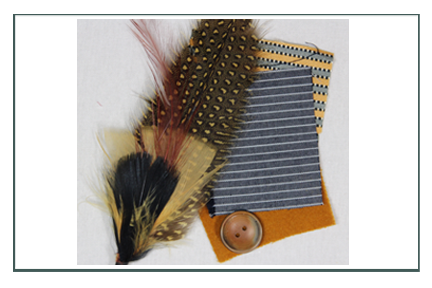
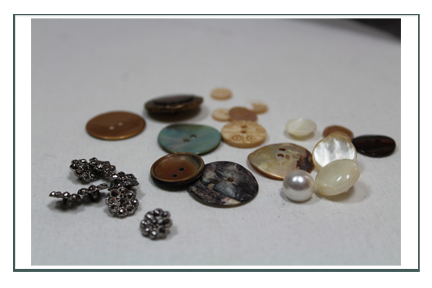
 Final Fabric & Notions
Final Fabric & Notions
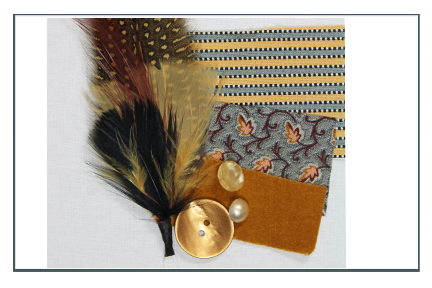
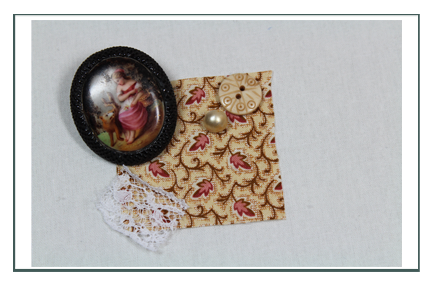
Final Ensemble
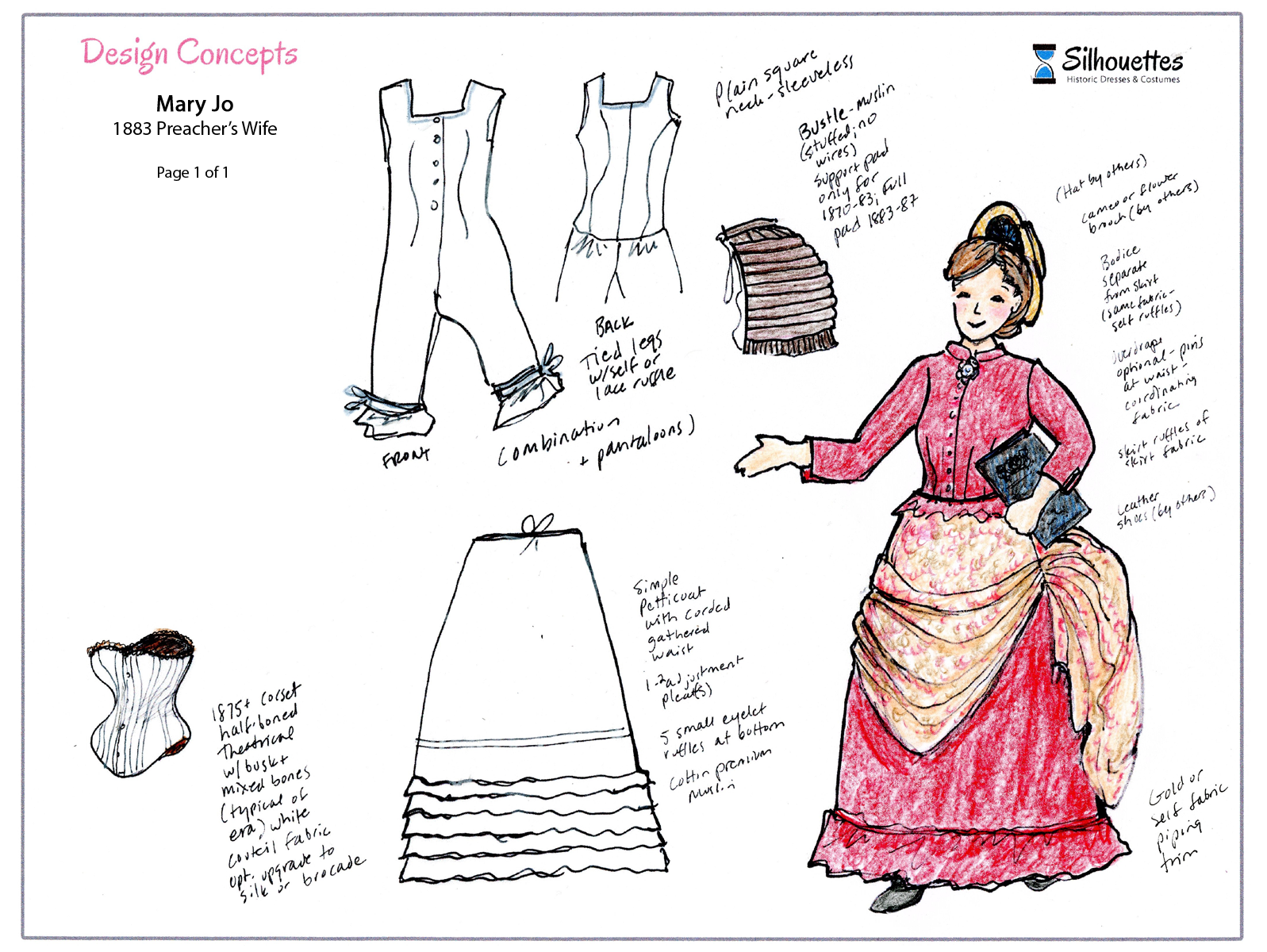
FINAL GARMENTS:
Long Corset, late 1870’s – early 1880’s; half-boned and gored; strategic for waist and belly cinching, to push busts up
Combination as per period; long legs; complete open split; ornamentation with ties; white lawn & highly decorated with mass produced trim yet made and fitted tightly
Petticoat, multi-tiered for elongated bell shape with slight back fullness and very slight train but “walking length”; white lawn; mass produced trim
Bustle; 1st era bustle over petticoat; “padded rump” since 1883 bustles were out of style and fabric made the shape until 1886 when the huge bustle #2 came into fashion.. she would maintain the desired shape with a light and functional inexpensive version of the two; silk taffeta and cotton stuffing
Bodice and Skirt with velveteen trim and self ruffle to fit silhouette; optional build for bustle as the bustle may go under just the drape as optional for “dress up”; daily wear no bustle and no drape
Drape of 2 contrasting fabrics per period; all of cotton print to coordinate with bodice/skirt
ACCESSORIES:
Period wig
Black button up boots per 1870’s – ’80’s
silk or cotton black stockings over the knee (optional linen tie garters)
Whitby Jet brooch
Hat: small bonnet custom design as per sketch using skirt/bodice/drape fabrics plus contrasting black (not sketched) & actual vintage brooch
Click here to see FINISHED DESIGN & PIECES on Suzi’s main page
Click here to go back to see History of Time & Place for Suzi
